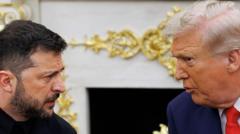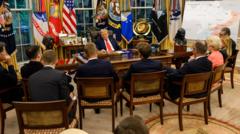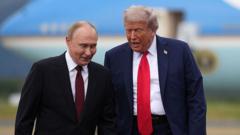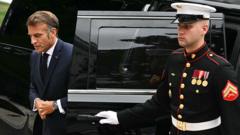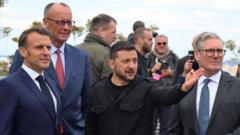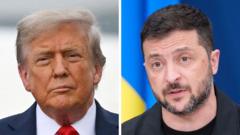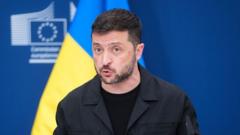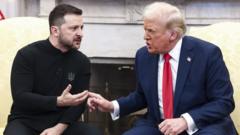The Washington talks involving key leaders highlighted both possibilities and challenges in moving towards peace in Ukraine, revealing a mix of optimism and skepticism.**
Key Insights from Recent Ukraine Diplomacy in Washington**
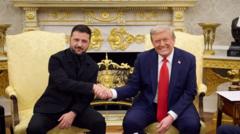
Key Insights from Recent Ukraine Diplomacy in Washington**
A deeper look into the latest negotiations in Washington aimed at resolving the ongoing conflict in Ukraine.**
President Volodymyr Zelensky visited the White House to engage in crucial discussions with US President Donald Trump concerning the ongoing war in Ukraine. This move comes on the heels of a previous summit in Alaska where Trump met with Russian President Vladimir Putin, yielding little progress towards a ceasefire. Despite optimistic rhetoric from Trump, nothing concrete emerged by the end of the day regarding security guarantees or peace negotiations.
1. **Potential Putin-Zelensky Meeting on the Horizon?**
After the talks, Trump took to social media, announcing his intent to organize discussions between Zelensky and Putin, hinting at a follow-up trilateral meeting including himself. A Kremlin aide acknowledged the possibility of enhancing the representation from both sides in future negotiations. However, the path to facilitate talks between the historically adversarial leaders appears complicated, as Zelensky sees any attempt for dialogue as a tactic by Russia lacking genuine interest in peace.
2. **European Leaders Resist Trump's Stance on Ceasefire**
Trump’s reluctance to call for an immediate ceasefire prior to negotiations diverges from Ukraine's stance that considers it a prerequisite for talks. European leaders firmly responded, particularly German Chancellor Friedrich Merz, emphasizing that without a ceasefire, meaningful discussions would be unlikely. Zelensky, however, refrained from reiterating calls for a ceasefire, indicating a tactical pivot in his public approach.
3. **Security Guarantees Feature Prominently**
Trump assured Zelensky of US support for Ukraine's security in any peace deal, although specifics on military involvement were vague. Notably, Trump did not dismiss the idea of American troops in Ukraine if necessary. Zelensky later reported securing a potential $90 billion weapons deal with the US, aimed at enhancing Ukraine’s military capabilities, suggesting a significant framed effort towards ensuring security in the conflict.
4. **Zelensky's Diplomatic Approach Shifts**
In contrast to his prior visit, where he faced criticism, Zelensky's charm offensive included multiple expressions of gratitude and personal touches, like delivering a letter from Ukraine's First Lady to Melania Trump. Meanwhile, European leaders acknowledged Trump’s role in facilitating these discussions, with sentiments signaling a collective concern over future Russian threats to regional security in Europe.
The talks underline a complex interplay of diplomacy where optimism coexists with significant hurdles. As Ukraine continues to face aggressions, finding pathways to peace remains an intricate challenge involving a delicate balance of international relationships and strategic commitments.

